As we were pulling into the parking lot, we saw this gopher tortoise crossing the road. They are cautious of others but then just keeping on going with determination.
We began our visit with a self-guided tour of the Koreshan Historic District. Dr. Cyrus R. Teed started the movement to create a utopian community (with 200 followers) in Moravia New York in 1880. The group met with hostility due to their religious, scientific, and cultural beliefs. A physician, Dr. Teed became very disillusioned when exposed to the horrors of the Civil War. He had an "illumination" and later formed the Koreshan Unity in Chicago. The movement relocated to Florida (then a frontier) in 1894. Dr. Teed took the name of "Koresh," which is the Hebrew translation for his first name, Cyrus, mean shepherd.
Koreshan Unity was based on the concept of community living and property with everyone working toward the good of all. Envisioned as "New Jerusalem," a community without crime, tobacco or drugs, there were two types of memberships. The Cooperative Order could be joined by either buying shares or working in the Koreshan Unity businesses. Members could continue to live with their family outside of the Settlement. However, those that joined the Religious Order were celibate, lived and worked in the Unity Settlement, and gave all of their property to the Unity. In return, these members had all of their needs met, including financial security; practiced "pure" Christianity with like-minded members; participated in cultural activities and entertainment; received a classical education and vocational training; and equity between men and women (not practice elsewhere in the country).
Following is information about just some of the historical buildings here. The Art Hall served as a center for cultural, social, educational and religious activities of the Koreshan Settlement. It was built in 1905 and those outside the community were invited to attend some of the events.
The Order believed that the entire universe existed within a giant hollow sphere. Experiments were conducted that supposedly confirmed this belief.
The Planetary Court (1904) was home to seven woman who comprised the Planetary Chamber, the council that governed Koreshan Unity.
In addition to a sitting area, the three-story house had a separate bedroom with two doors (one to the outside porches and one to the interior hallway) for each of the women. A gorgeous staircase was built by an itinerant carpenter who had been a shipbuilder. Only the first floor is open to visitors. Most of the furniture in the house was brought to the Settlement from Chicago in the late 1800/early 1900s. Another model of the scientific belief of Koreshan Unity is on display here.
Five to six hundred loaves of bread were produced a day in the Bakery (1903) for the members of the settlement. Leftovers were sold in their store and were popular for their high quality in the local area. Originally bake ovens were attached to the rear of the building and four dormitory rooms were on the second floor for the bakers. A nearby Dining Hall (no longer standing) served as the communal gathering place for meals for those in the community.
Below is the Conrad Schlender Cottage (1876-1965) who joined the settlement in 1907. The one-room structure was an architectural style known as Florida Wood Frame Vernacular. Schlender did farming and cared for the cattle herd for the Settlement, but was also a machinist. Also shown is the Small Machine Shop (1905). Machine parts and kitchen items were made here for the community and timepiece and shoe repairs service were provided as well.
The Large Machine Shop (1904) housed the steam power machinery used in the laundry located next to it (no longer standing). The Steam Laundry was managed by one man and five helpers. They could wash and iron clothes for the entire settlement (of 200 people) in eleven hours! This service was essentially "free" to everyone in the community (as each person had a role that contributed to the needs of the group).
In 1925, the Koreshan Unity purchased a Diesel engine that provided power to the settlement until 1946 (when FL Power & Light began providing electricity). It was housed in the Generator Building.
This memorial commemorates Mrs. Hedwig Michel (1892-1982), the last Koreshan to live here. She donated 305 acres of the Koreshan Unity holdings to the State of Florida in 1961. Michel was the president and spiritual leader of Korshan Unity from 1944-1982.
The Koreshan Settlement built extensive vegetable gardens, planted orchards, and developed Victorian Gardens for a place to nourish the soul. Exotic trees and plans (including bamboo) adorned the Victorian Gardens with mounds, terraces, hedges, trellises, gazebos, benches, and ornamental fountains.
Below are replicas of foot bridges (White Victorian Bridge and Rustic Wood Bridge) built in the early 1900s to the area referred to as Monkey Puzzle Island (named for the Monkey Puzzle trees imported from Australia). Also shown is a ficus tree from tropical India and sausage tree (kigelia africana) from Africa. There are many large stands of bamboo that were planted extensively throughout the settlement.
Four mounds were constructed in the gardens, 3' high and 10' in diameter. These were decorative landscape features with concentric circles of crushed shell and grass. Today a gopher tortoise has dug a burrow in one of them.
These steps led to the Bamboo Landing that served as the entrance to the Settlement from the Estero River. Before the Tamiami Trail was built in the 1920s, the river was the primary means of trade and travel in the area.
Founders' House (1896) is the oldest remaining structure in the Settlement built by the Koreshans and was the home of Dr. Teed. When arriving at the Bamboo Landing, the path led directly to the entrance of Founder's House.
The Damkohler House (1882) was the cottage of a German homesteader who lived here with his family. It was the only structure on the property when Dr. Teed arrived. Damkohler donated the land on the Estero River to the Unity as he was convinced that Korshanity would be the next great religion.
Because dogs are permitted at this park, we hiked the Nature Trail along the Estero River and then the Blue Trail back to the Historic Settlement District.
The trail was shady and well marked with glimpses of the river along the way. Our sweet, doggy, Sadie, had a great time sniffing her way along the path, although the ranger had advised us to beware of snakes (we didn't see any).
Also along the Blue Trail we encountered several more gopher tortoises. In the final picture, you can see a large wet spot on the back of the tortoise's shell...that's where Sadie sniffed him. She was darn lucky she did not try to sniff the tortoise's head!
There is much more to see here. Six additional historic structures of the Koreshan Settlement can be found across the highway (US 41). We were all hot (87 degree weather!) and decided to conclude our visit after the hike.
We really enjoyed learning about this interesting religious sect. I had never heard of the Koreshan Unity, but there are some similarities in their beliefs of communal living and celibacy with the Shakers. The hiking trails were also a lot of fun for us.
Admission is $5/vehicle for the day. We have an annual FL State pass, so there was no charge. For additional information about this historic site, visit www.floridastateparks.org/park/Koreshan.
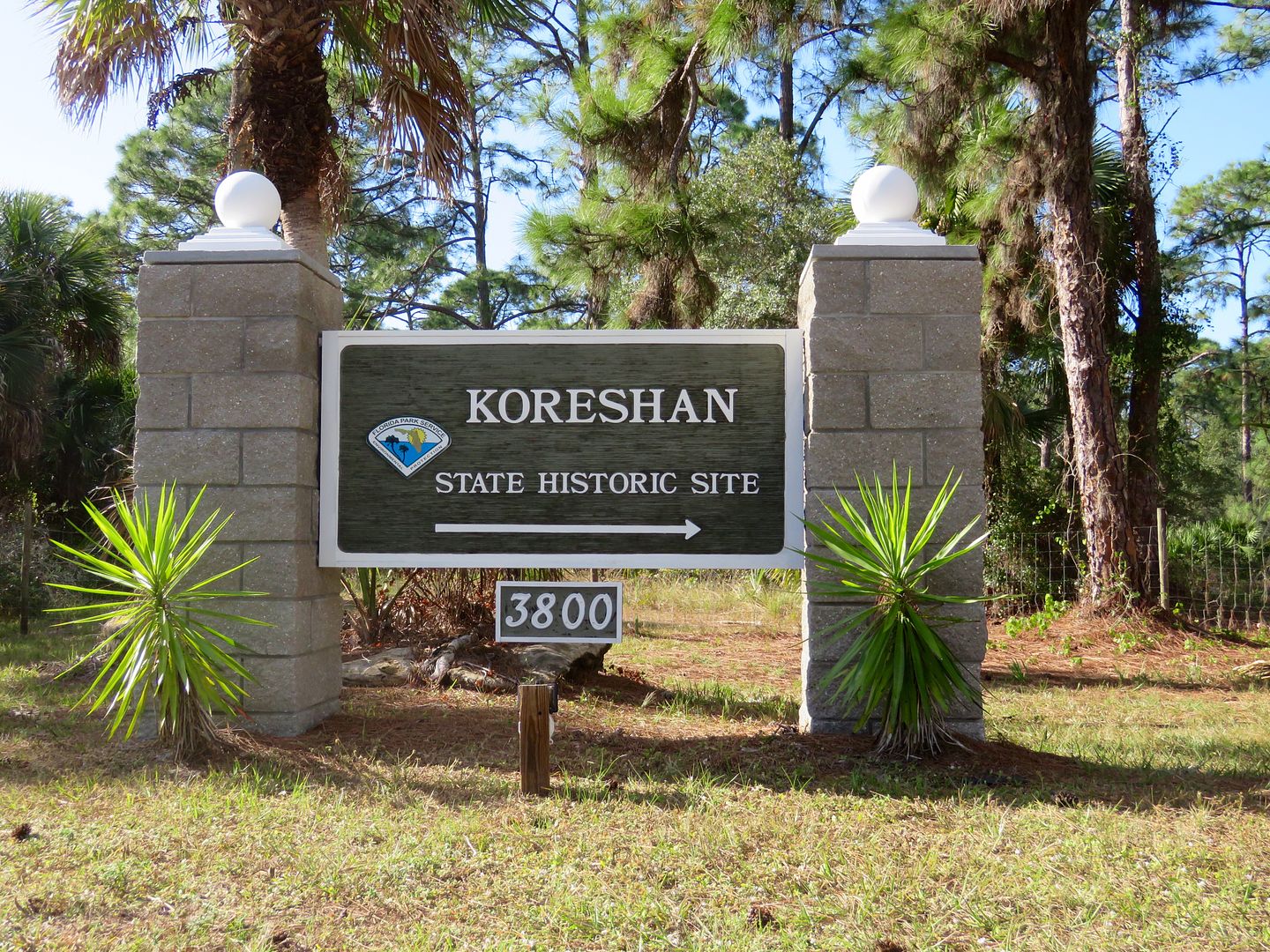
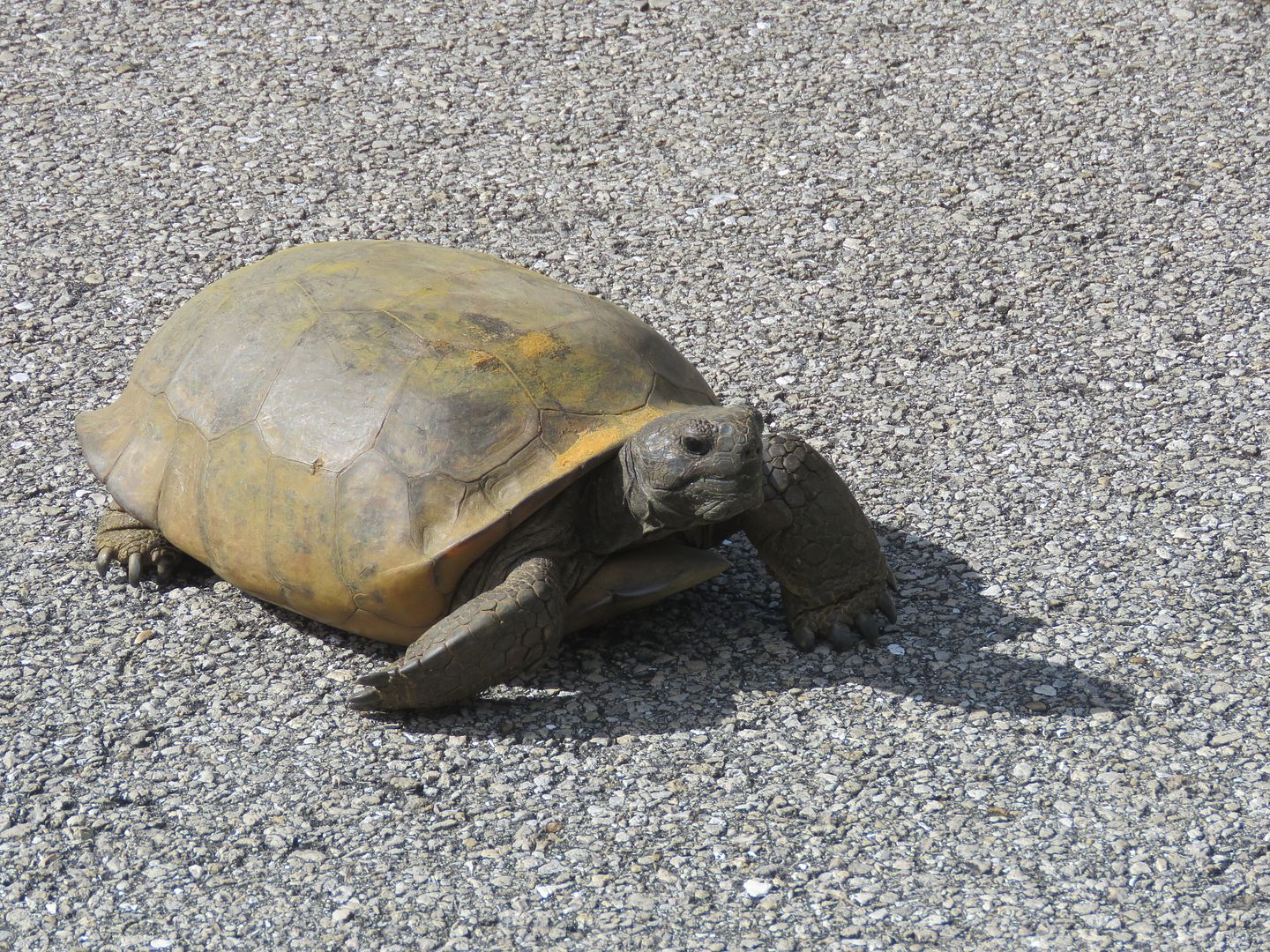
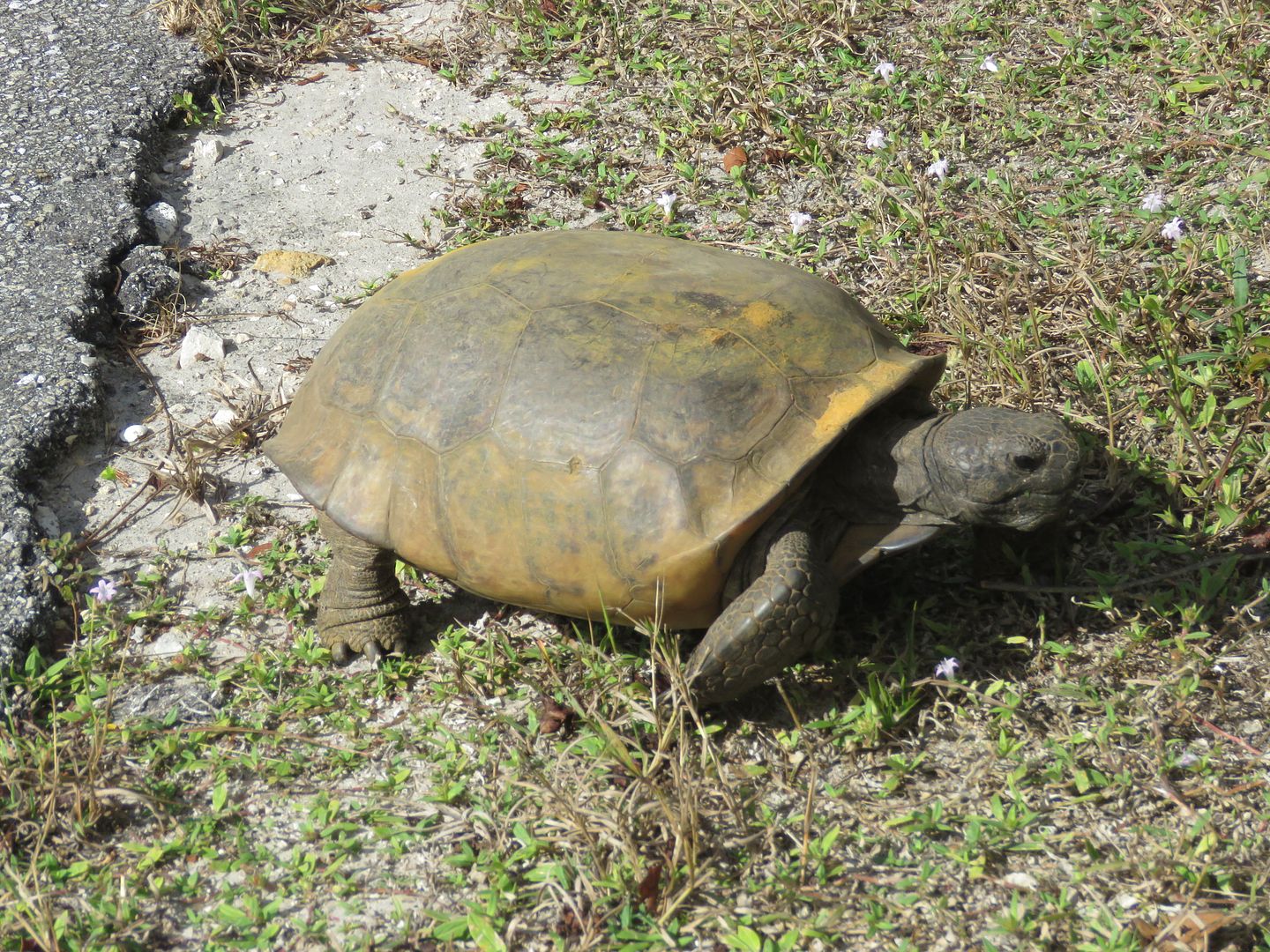
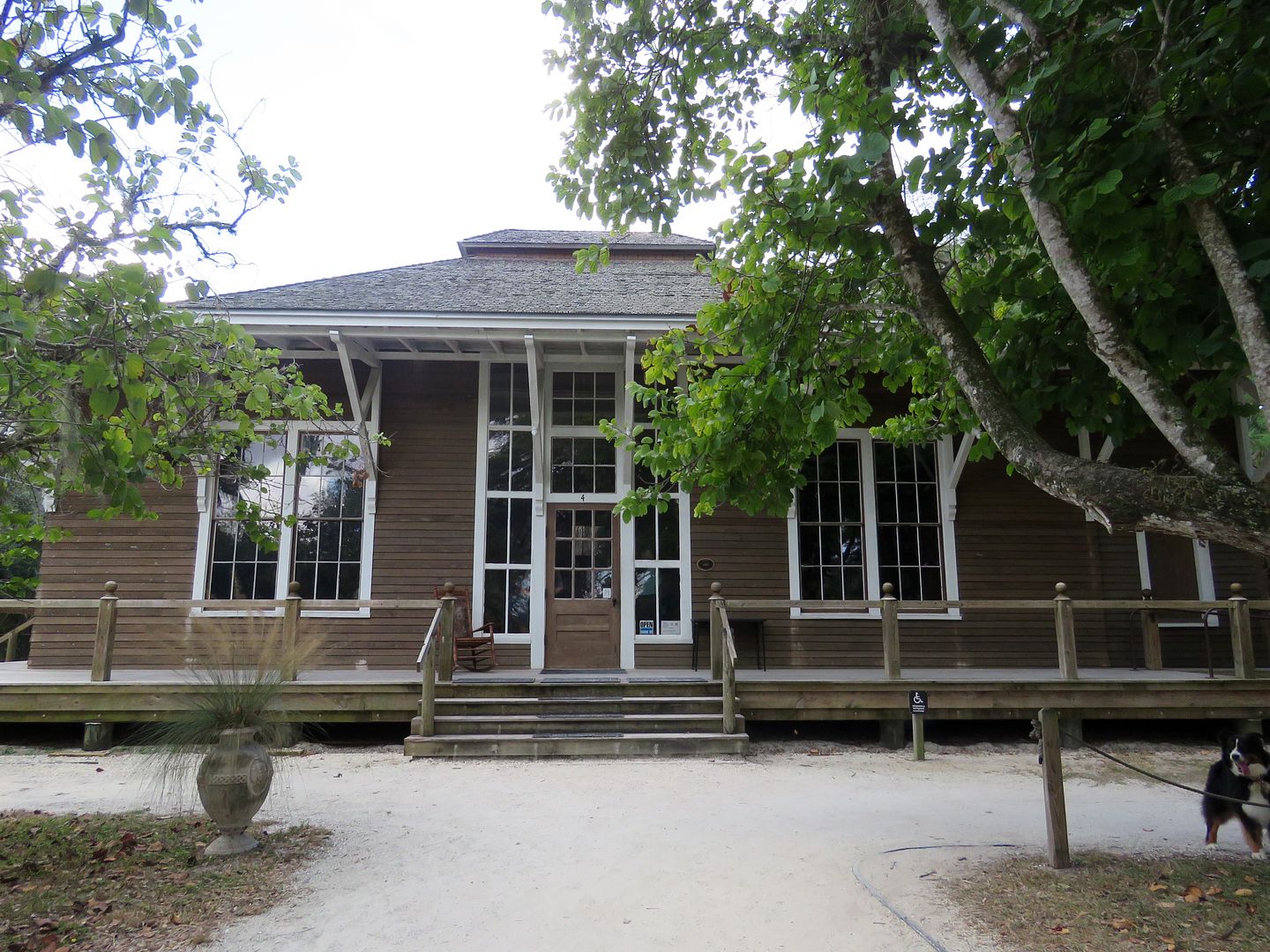


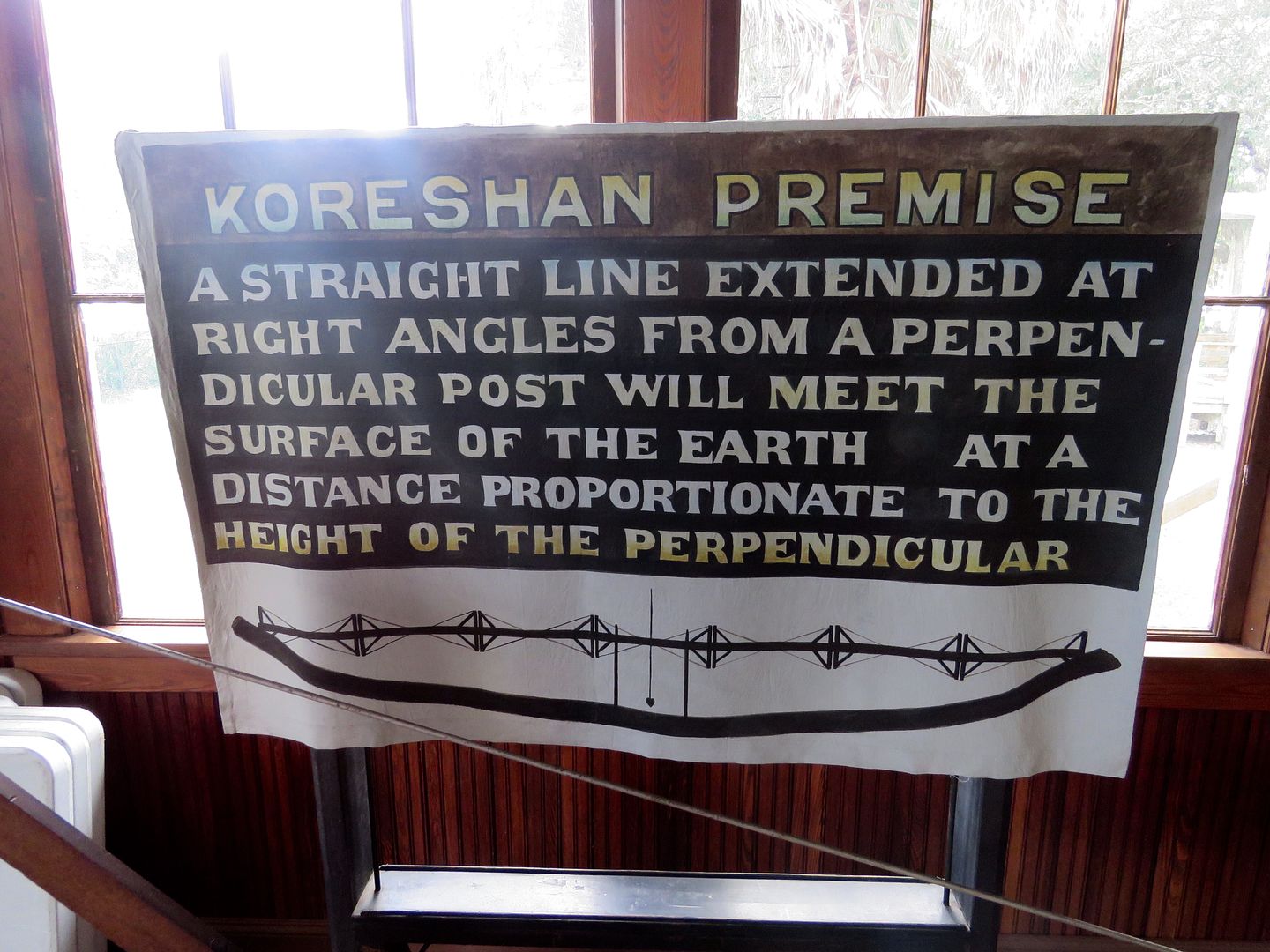

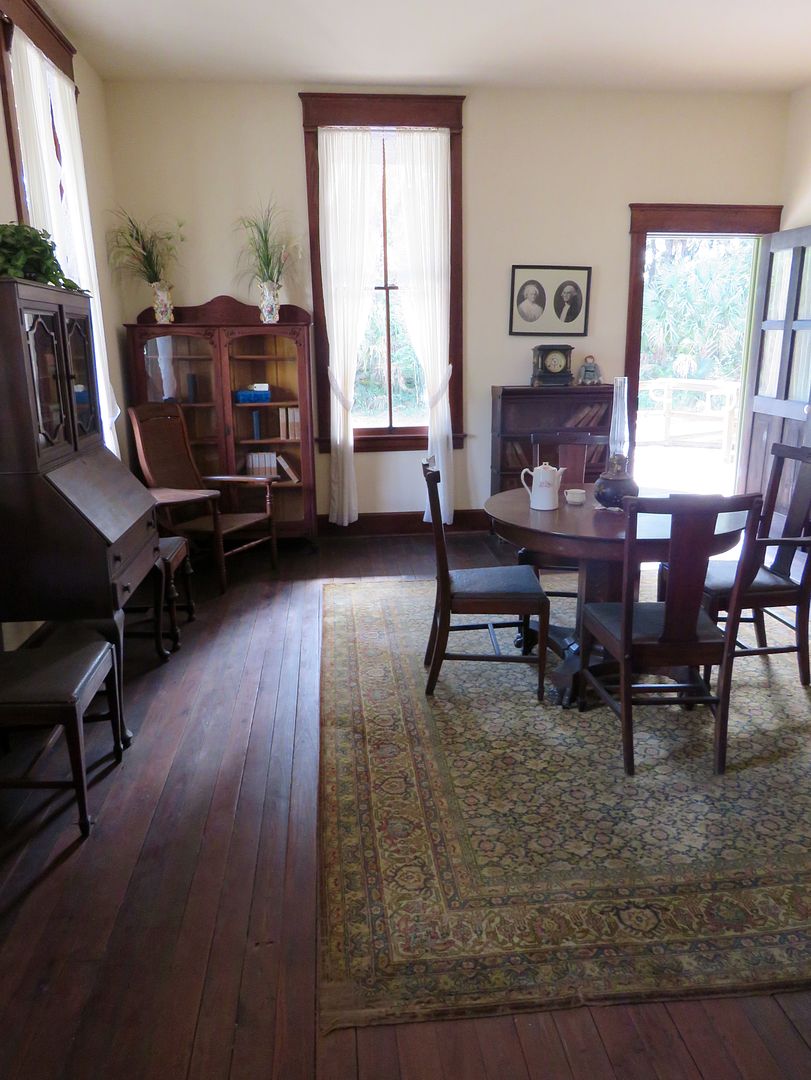
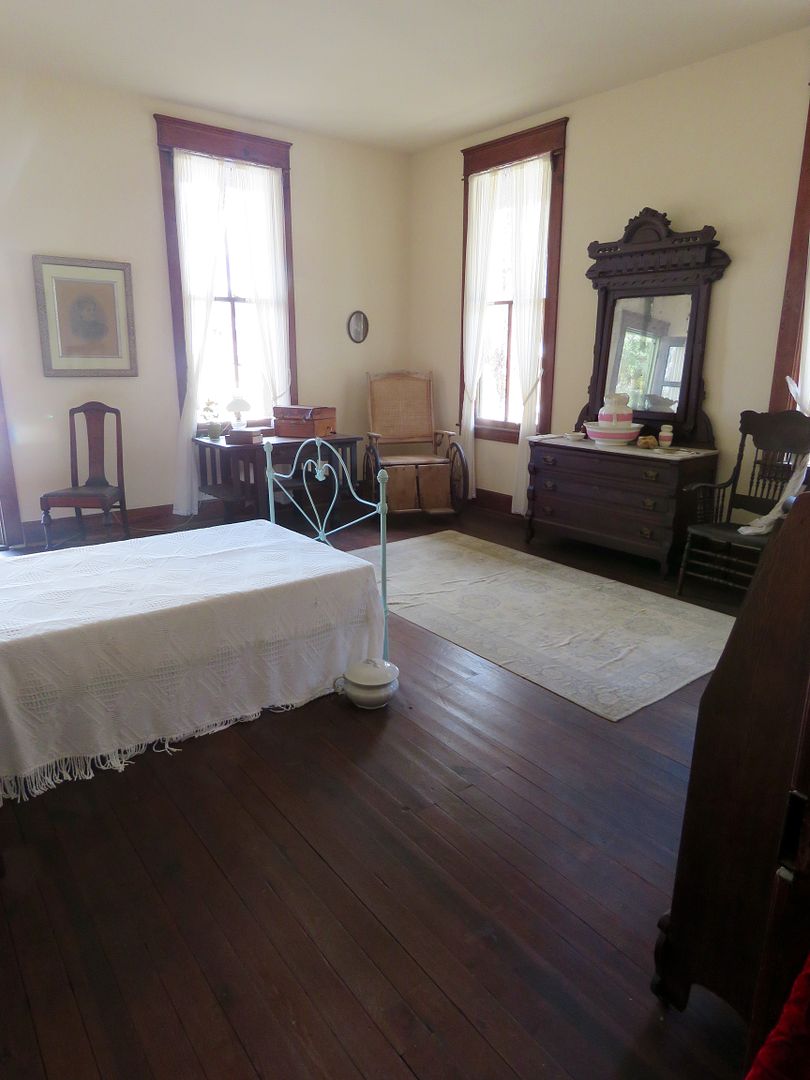

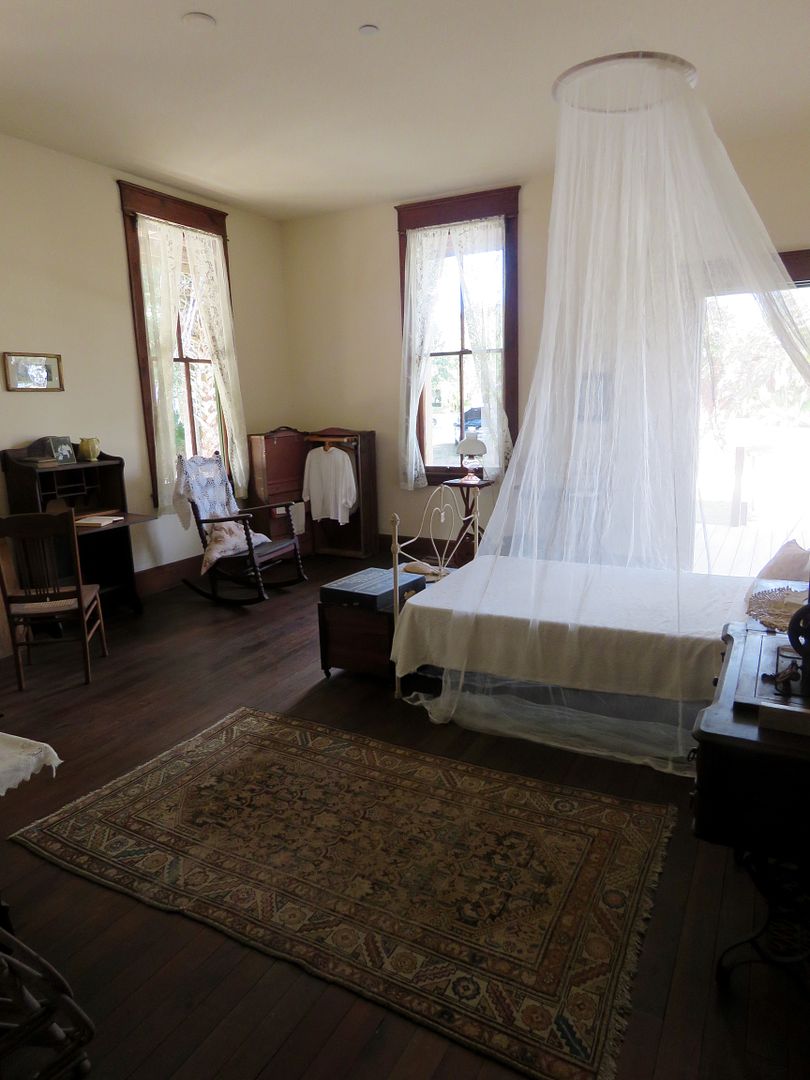
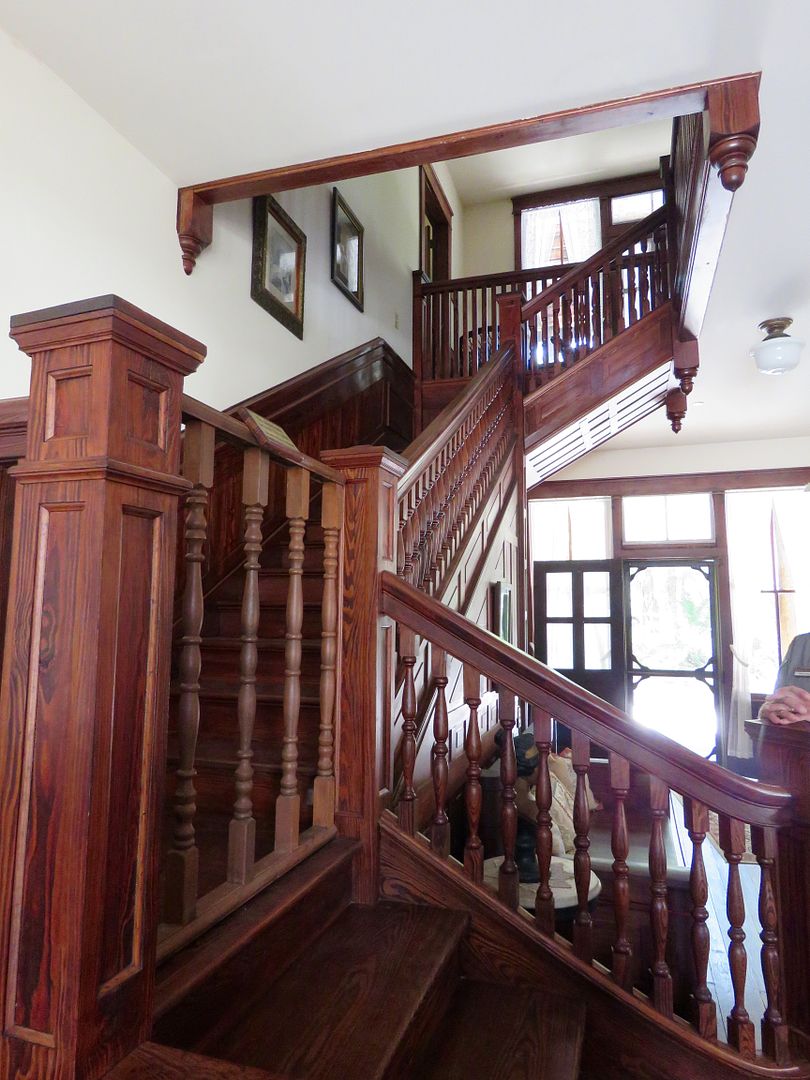




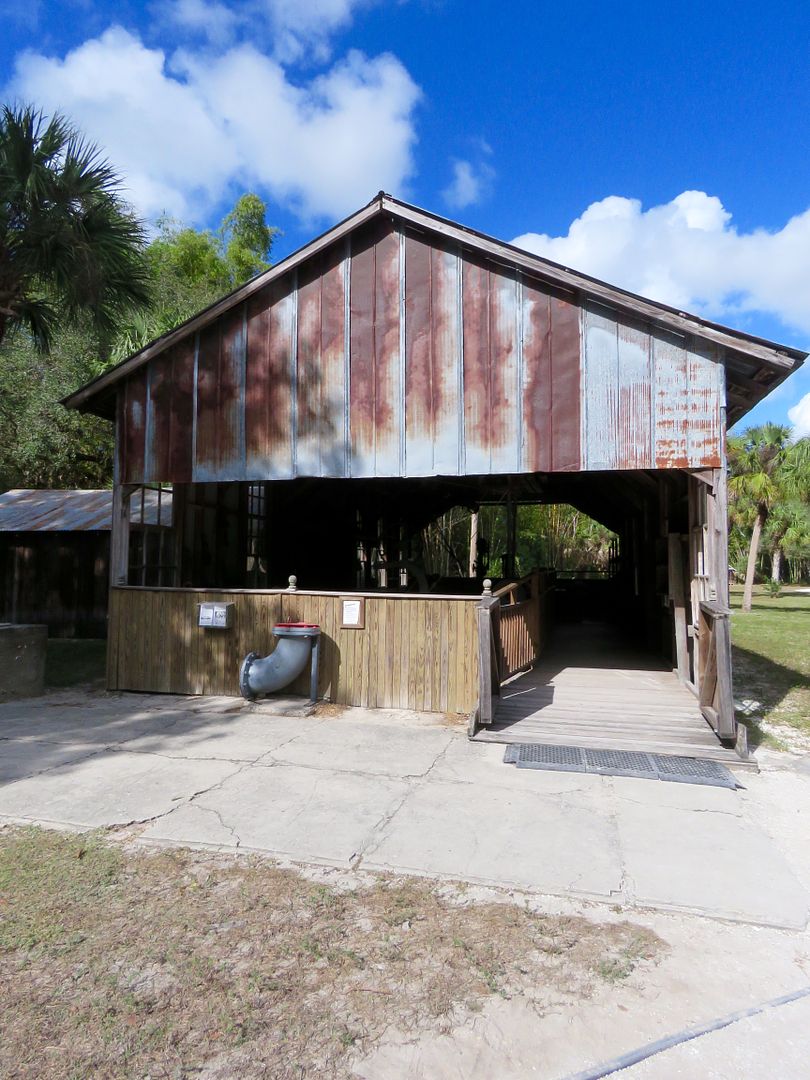
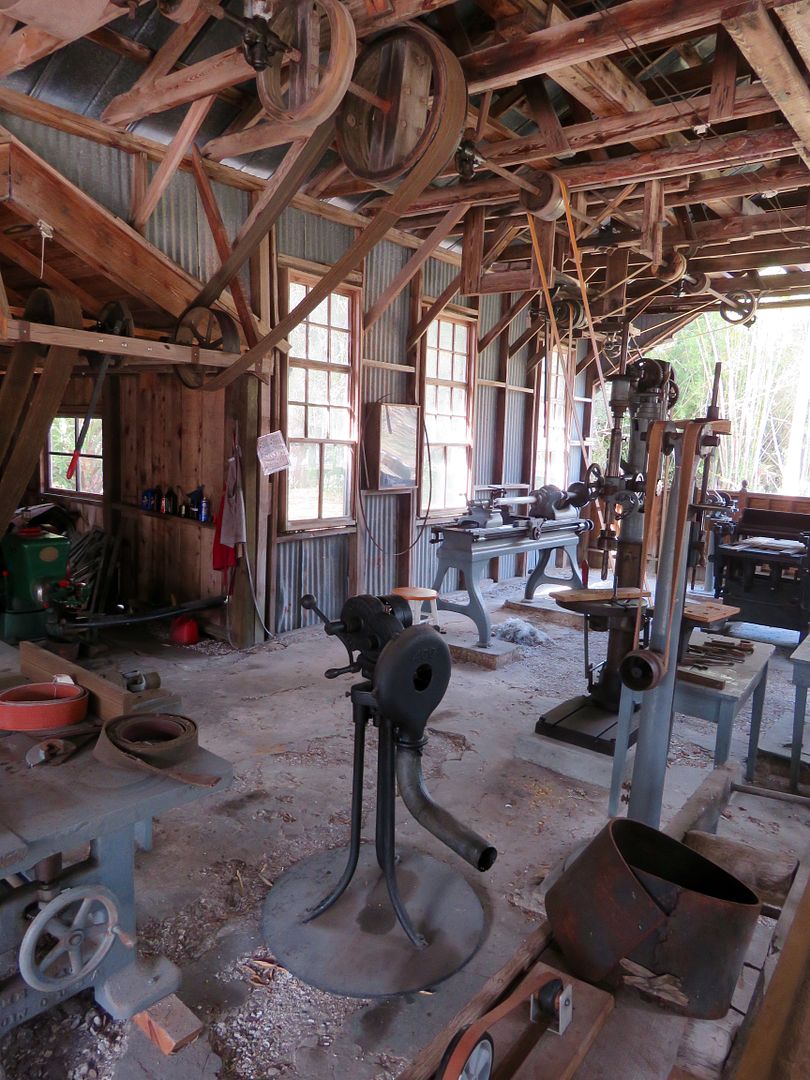
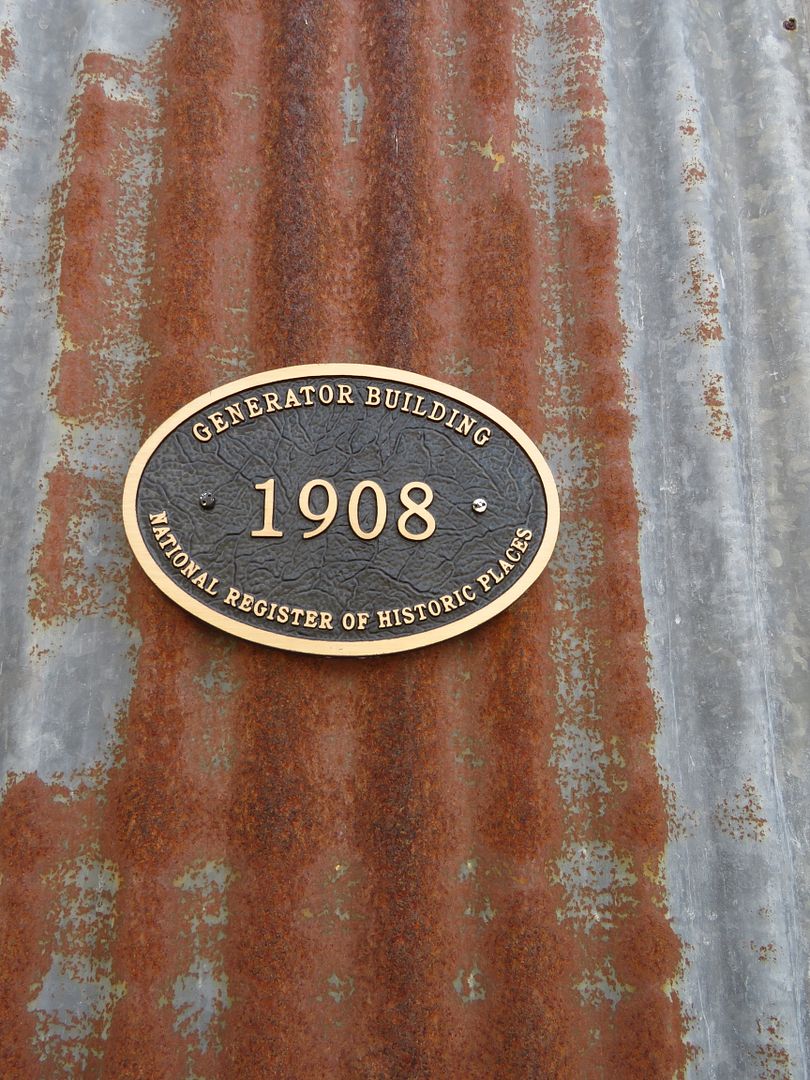

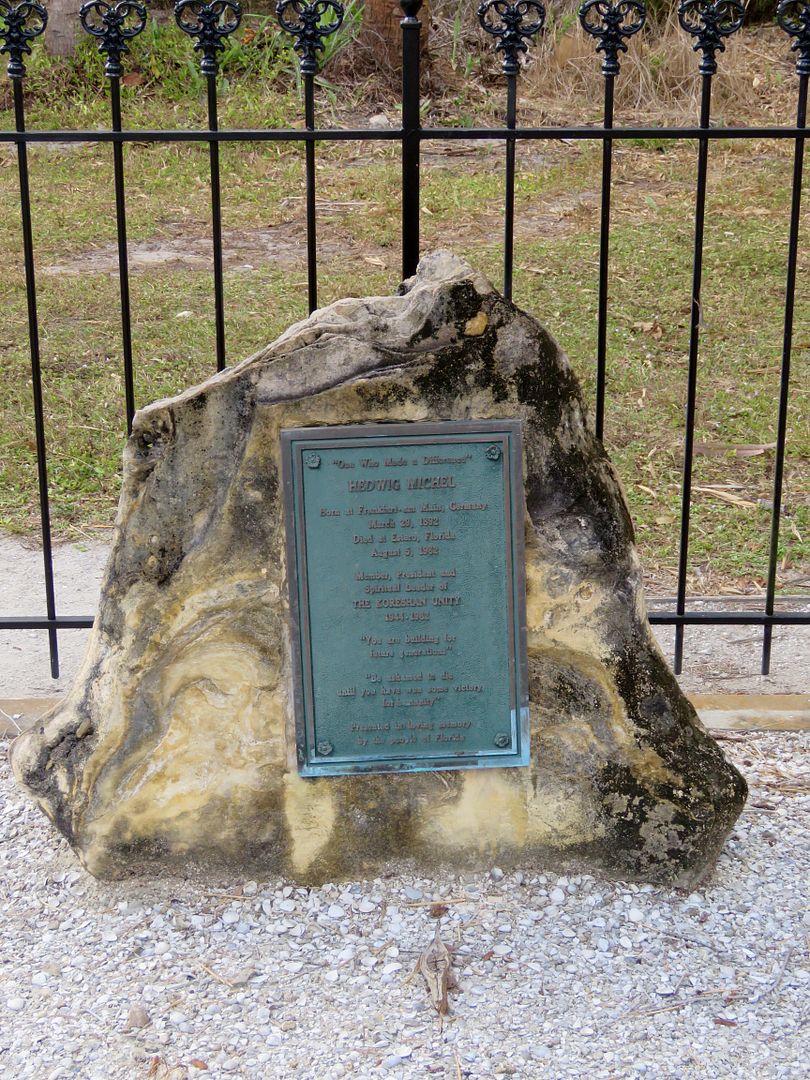


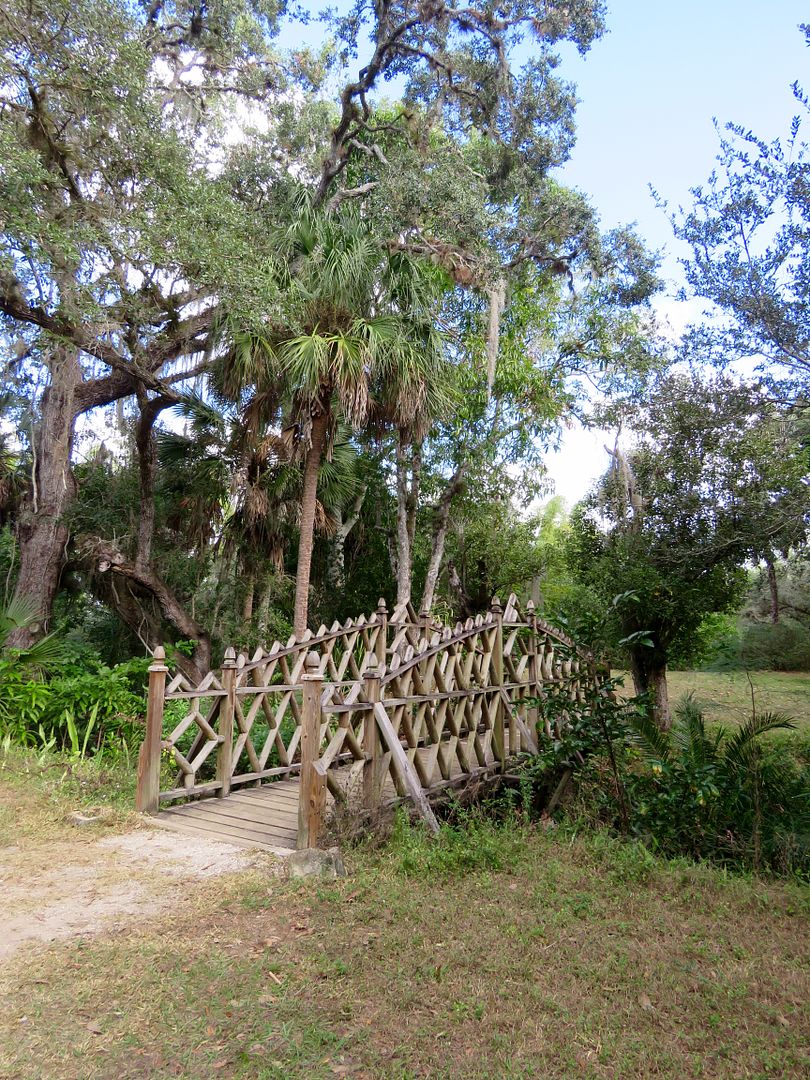
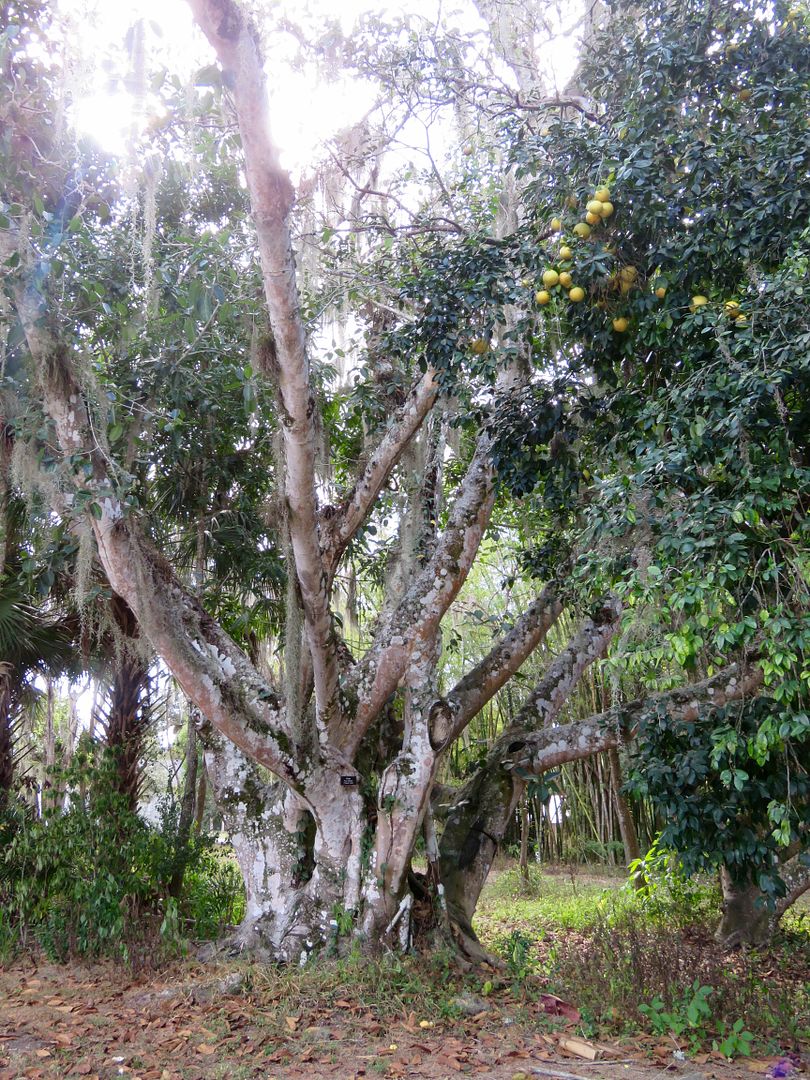
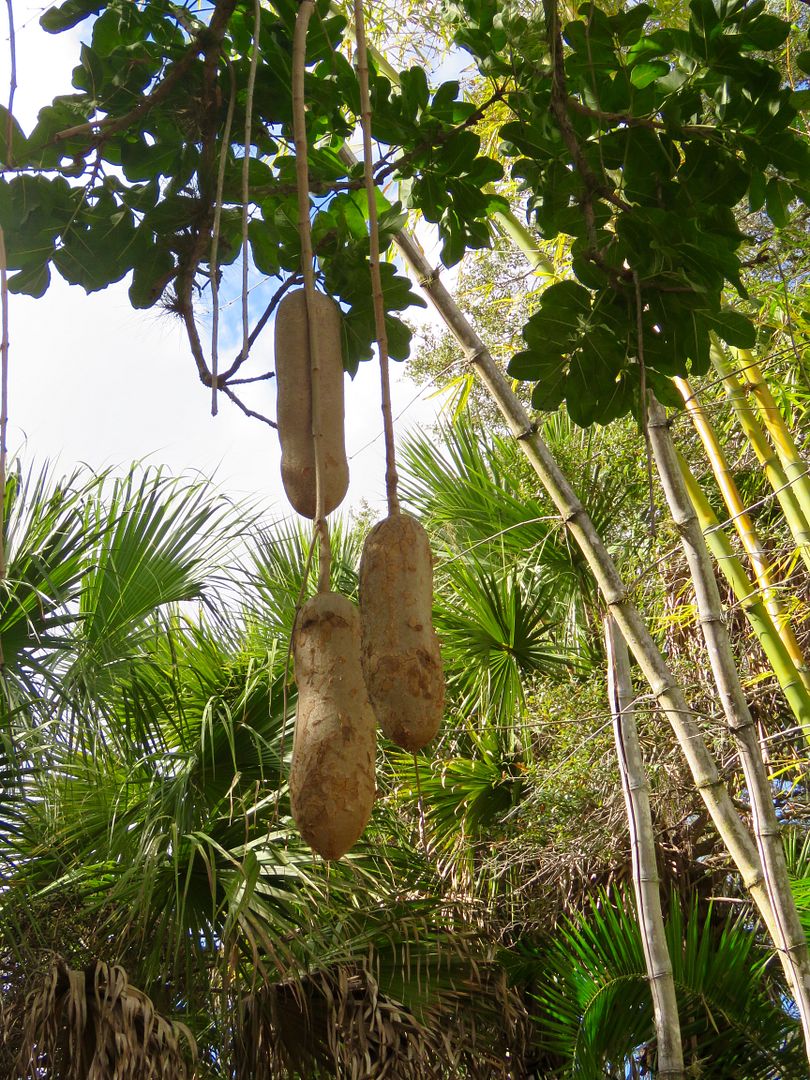





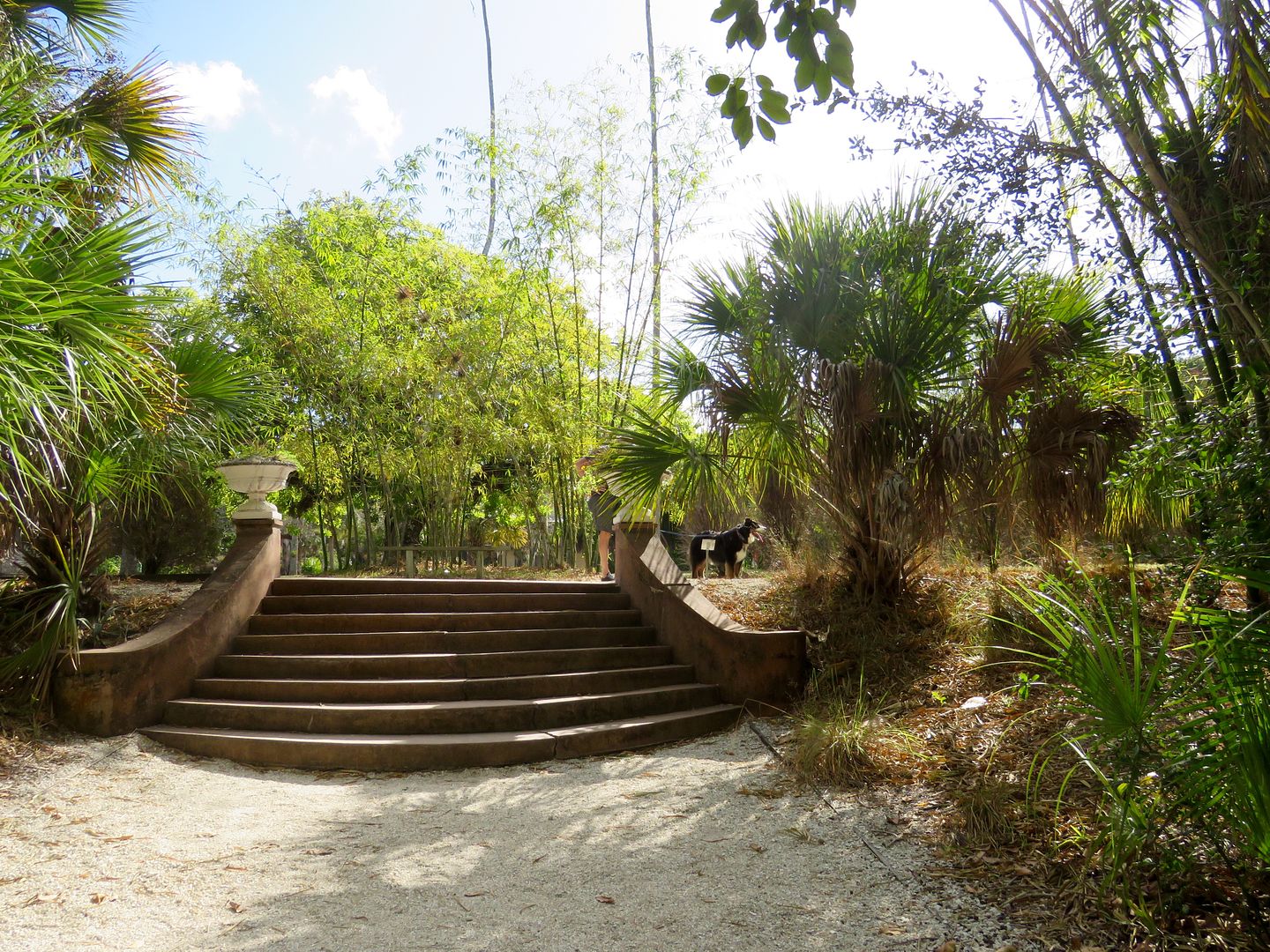
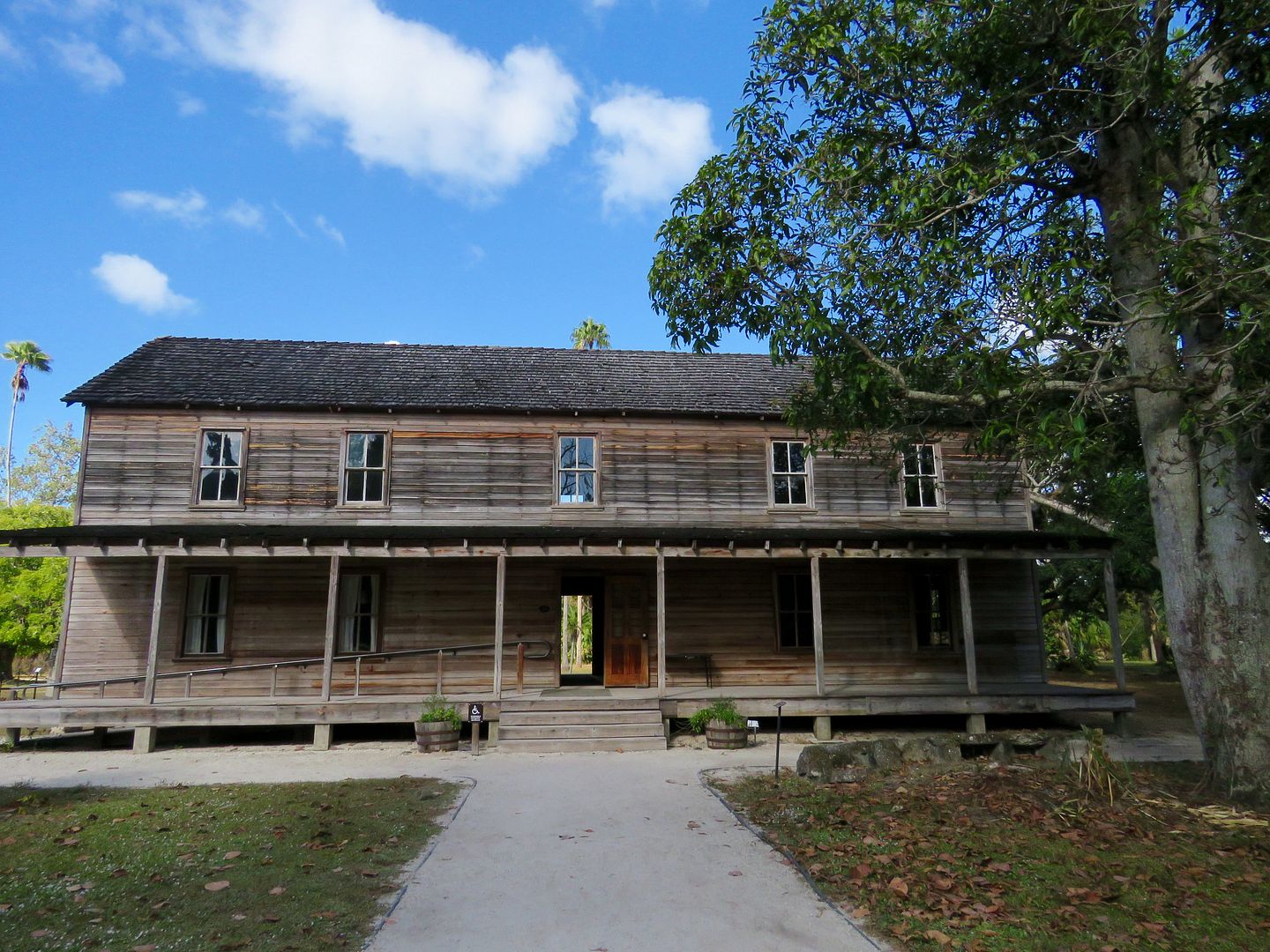


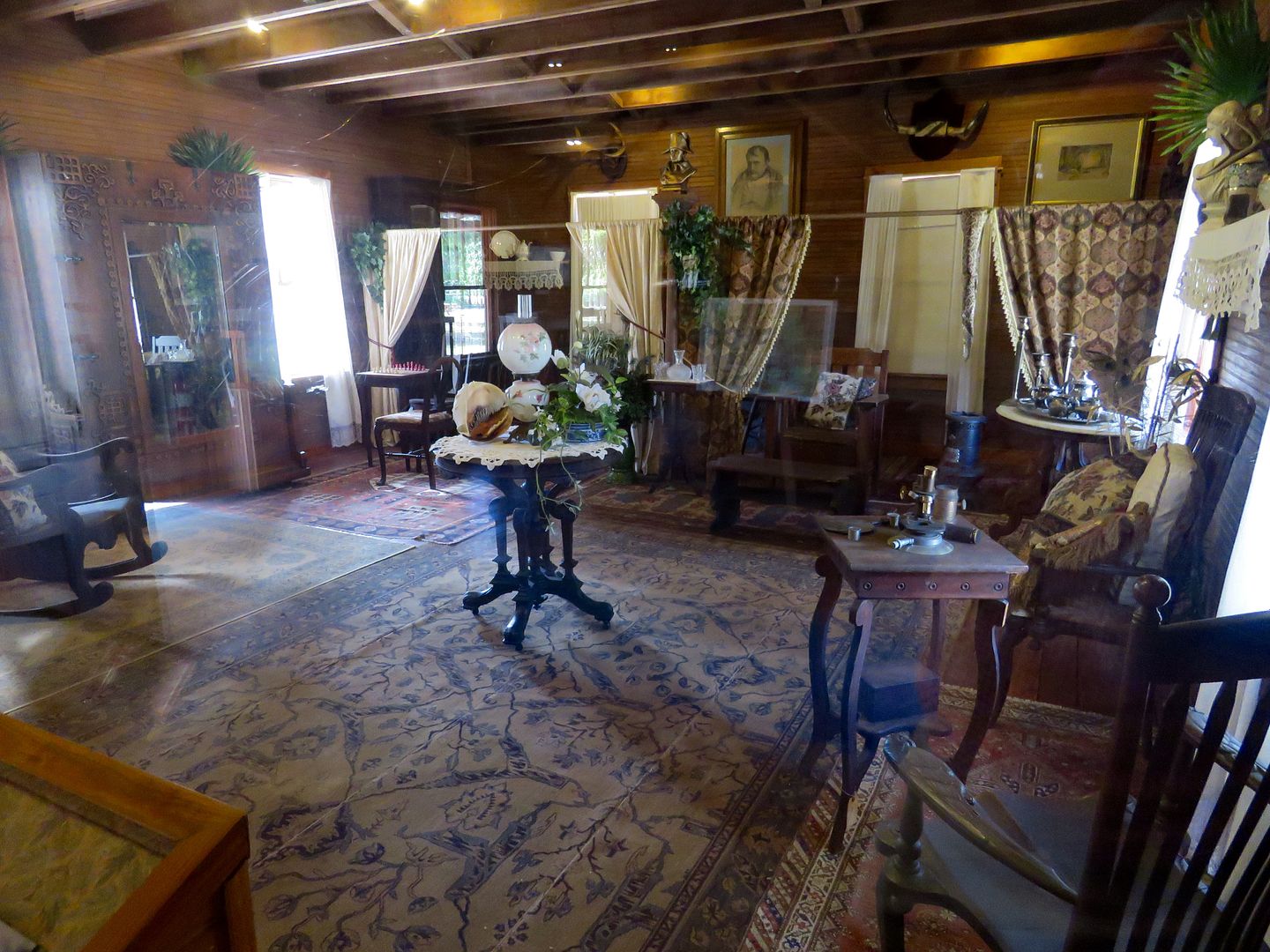

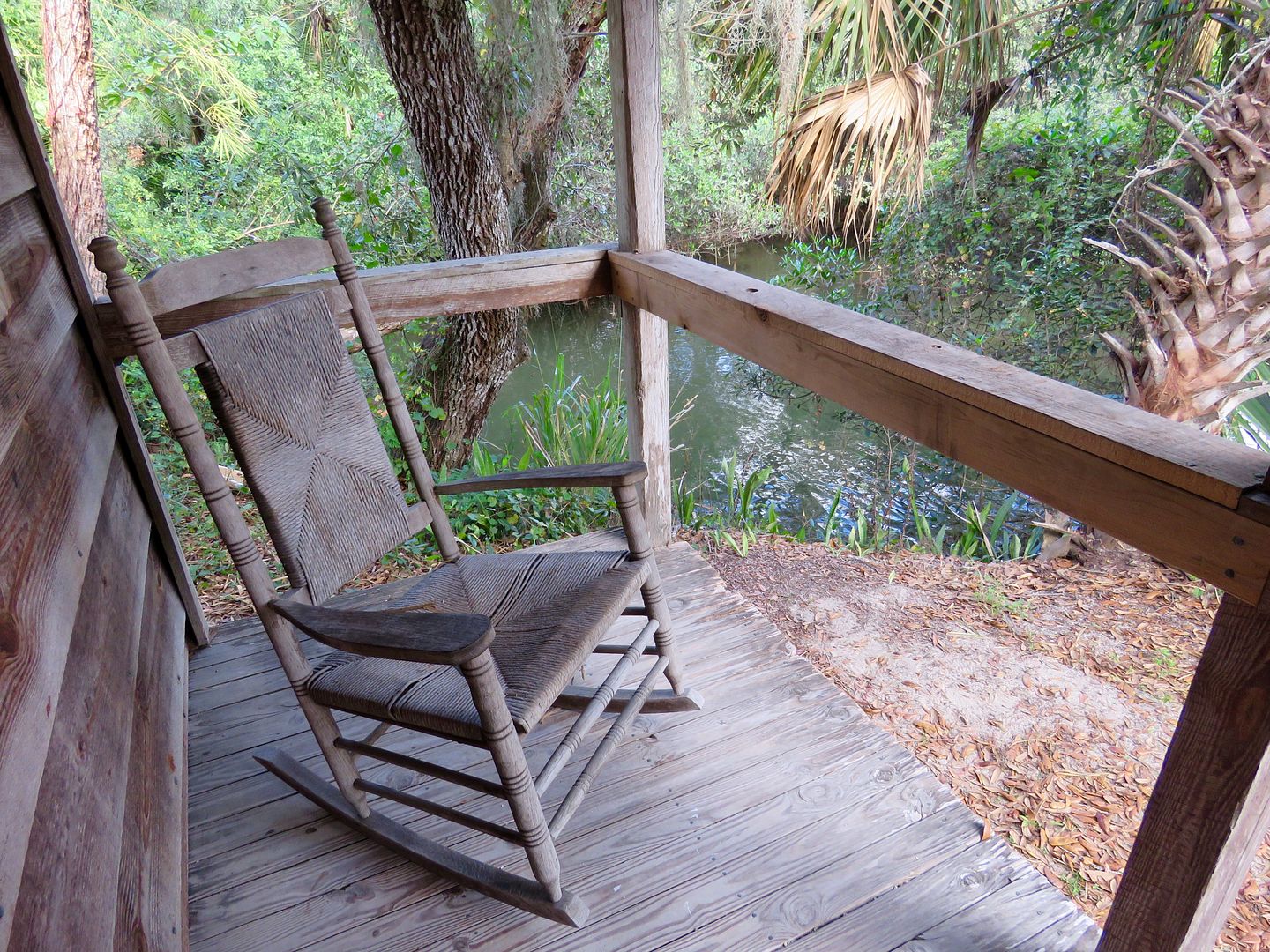
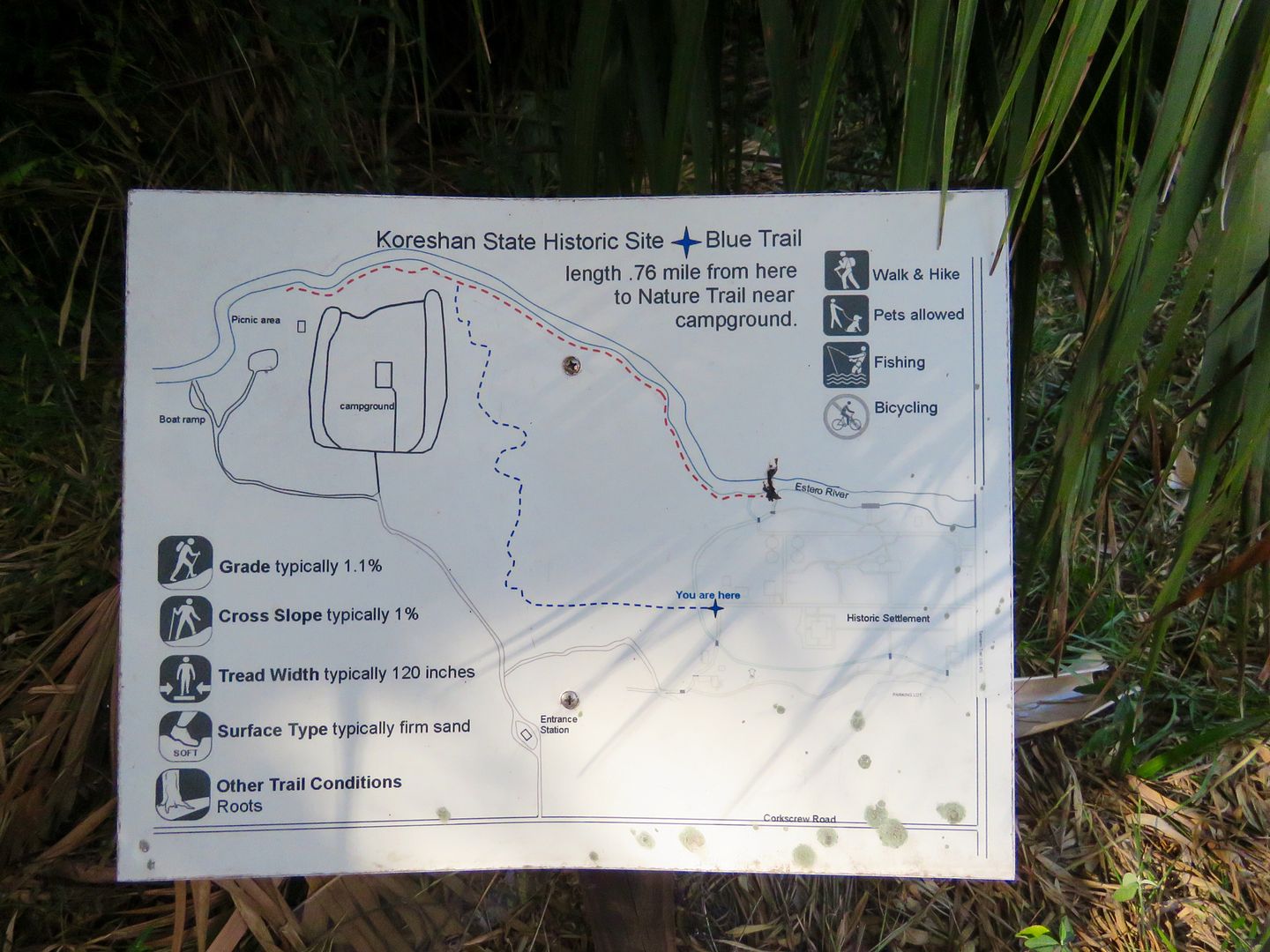
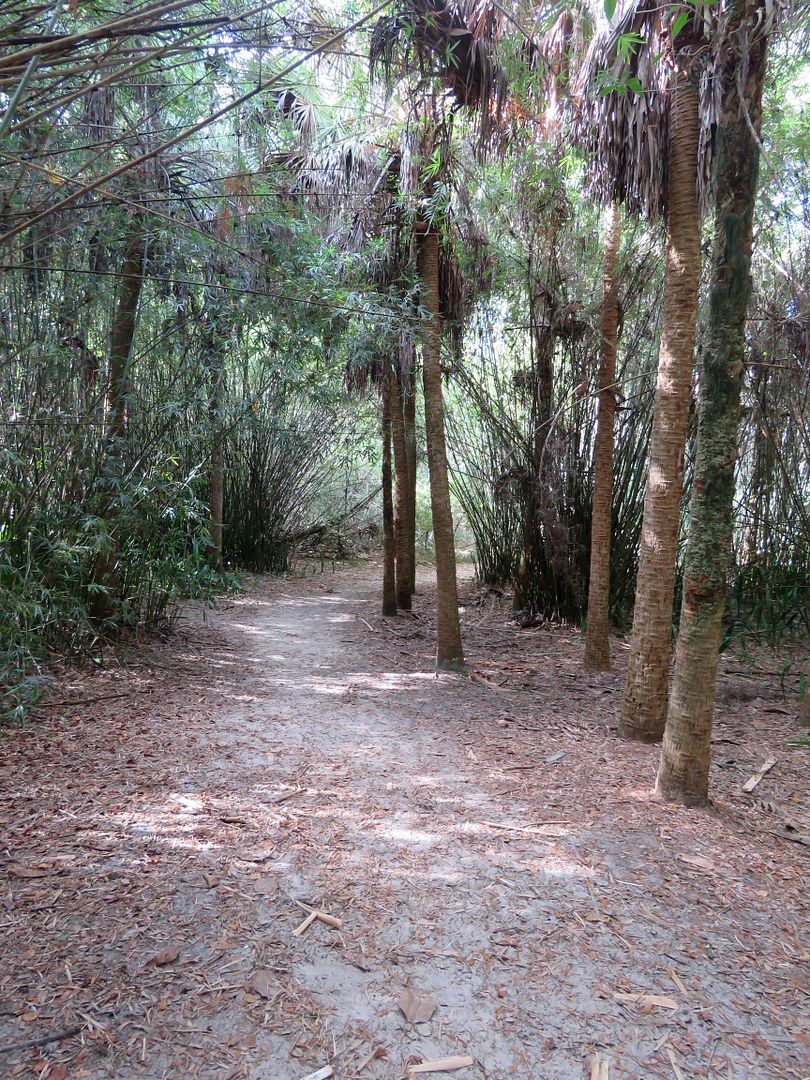


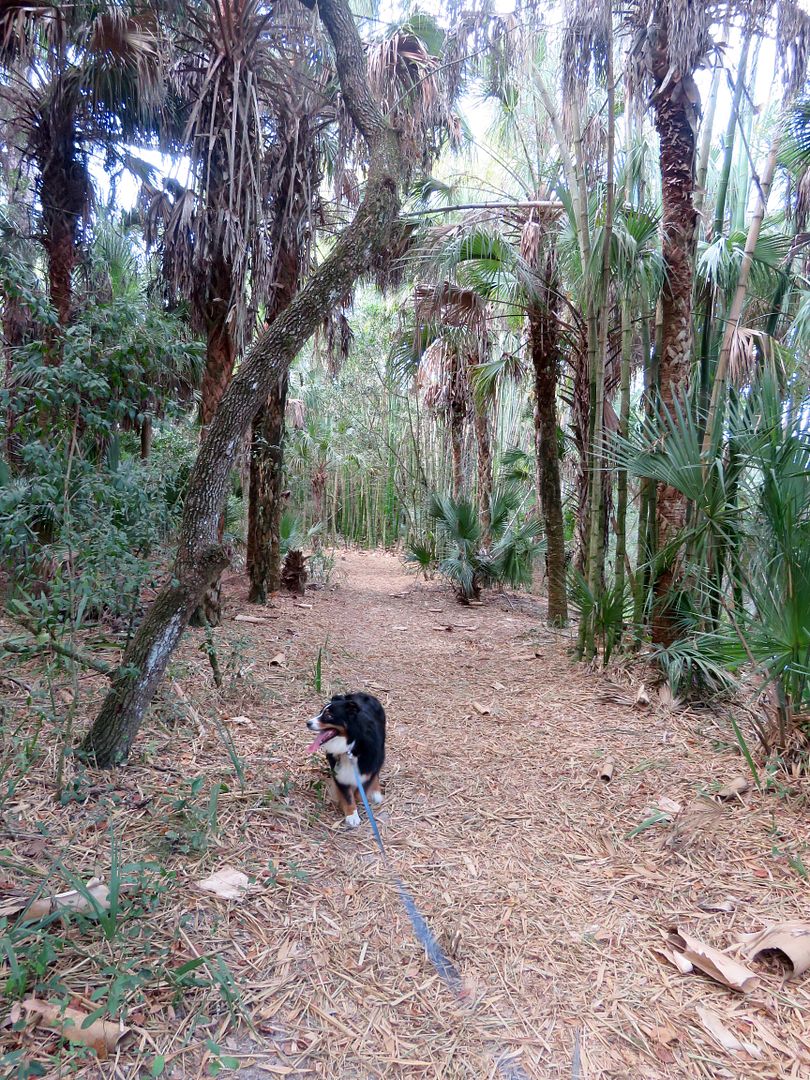
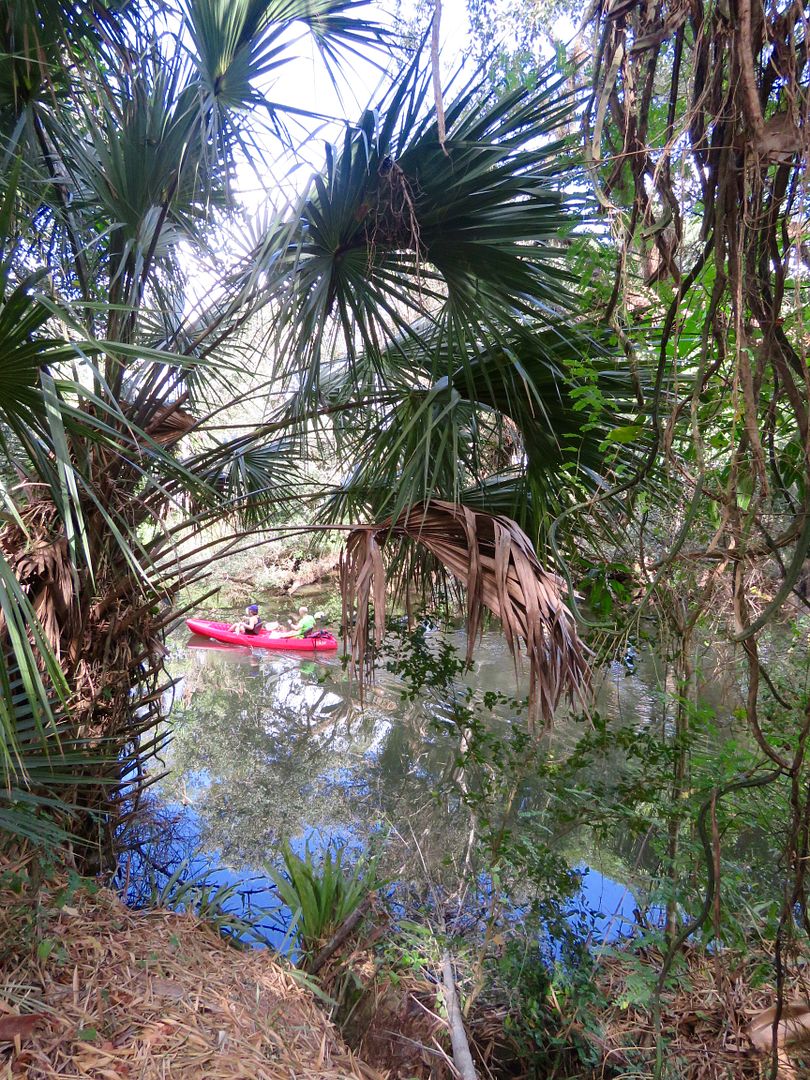
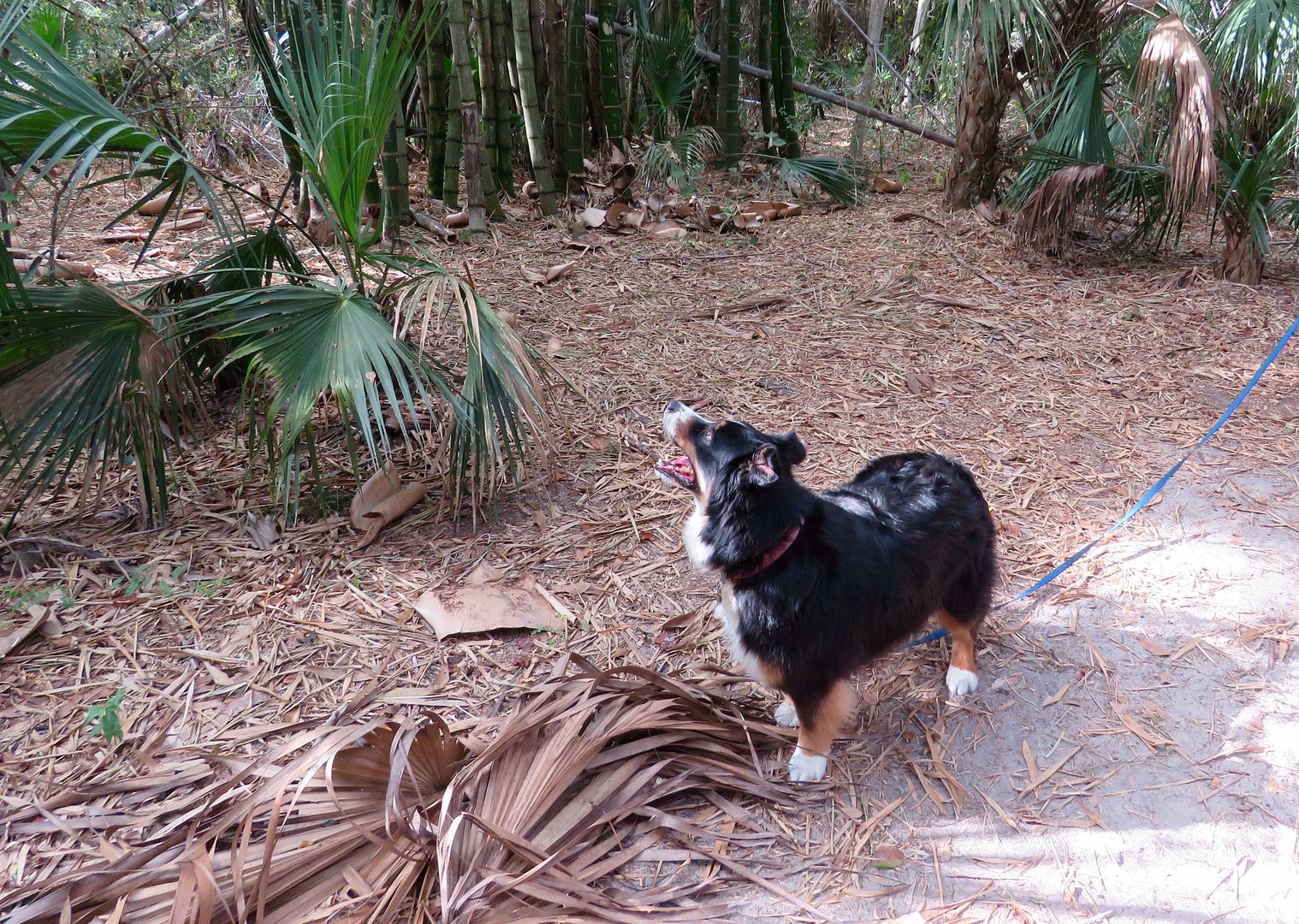
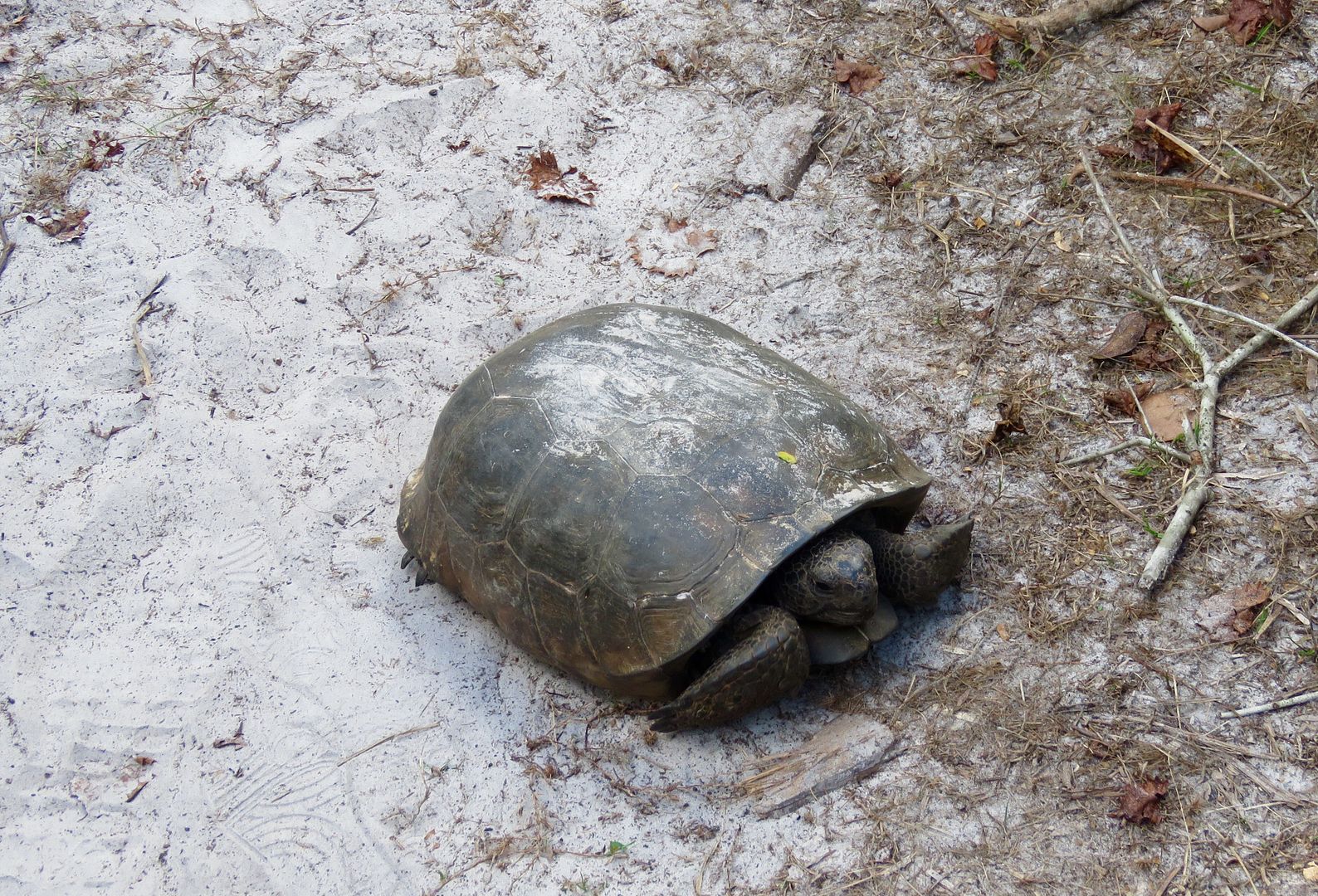

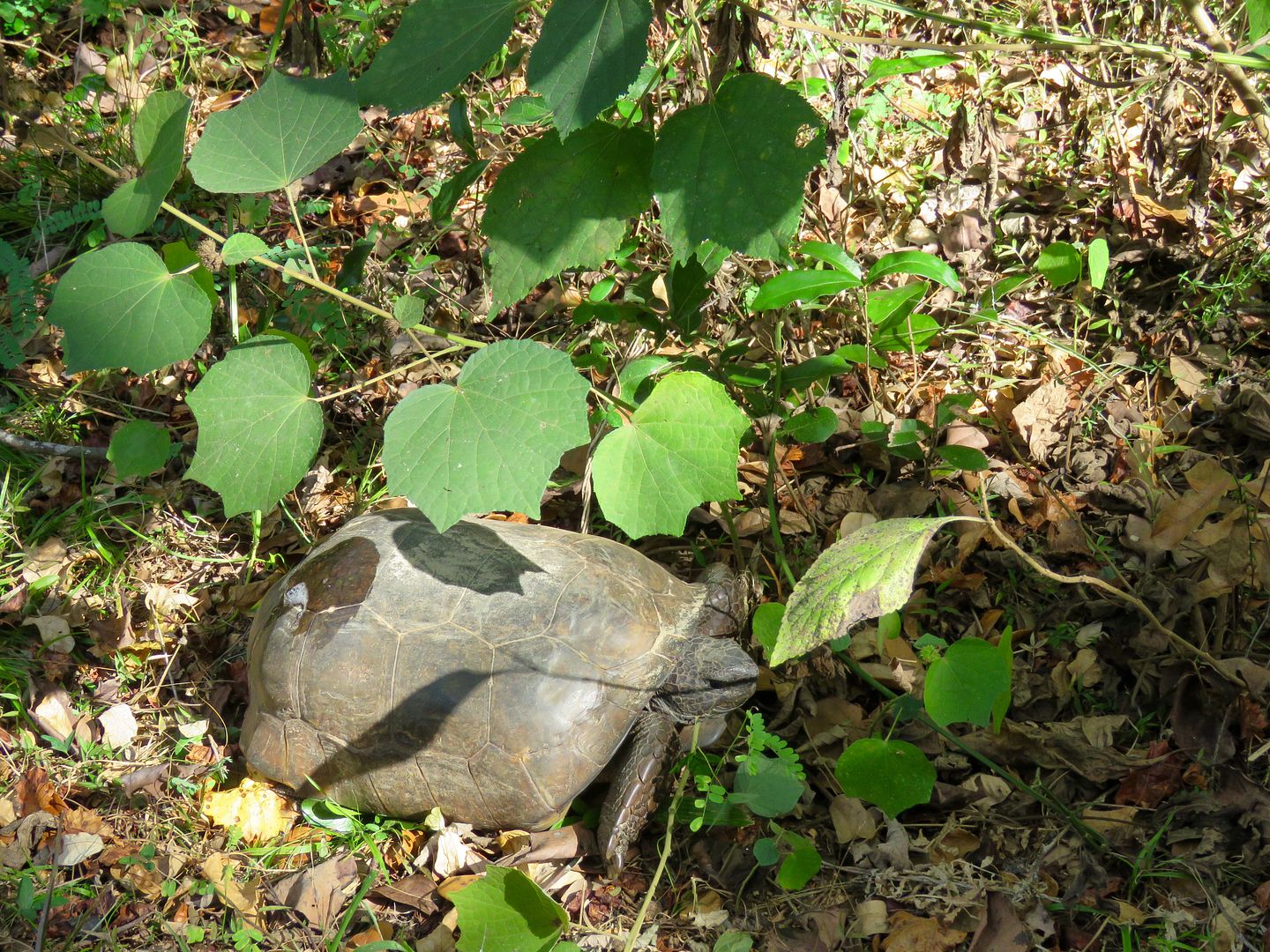
No comments:
Post a Comment